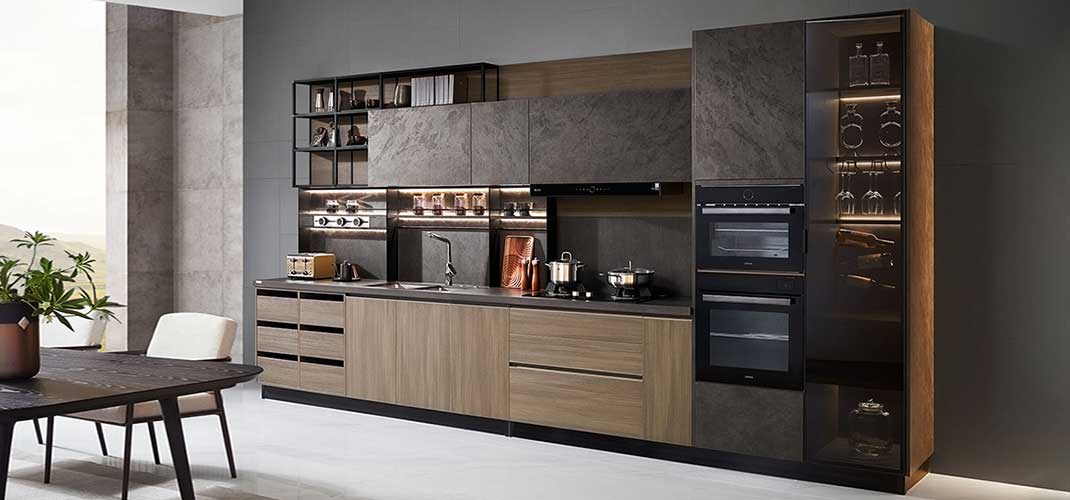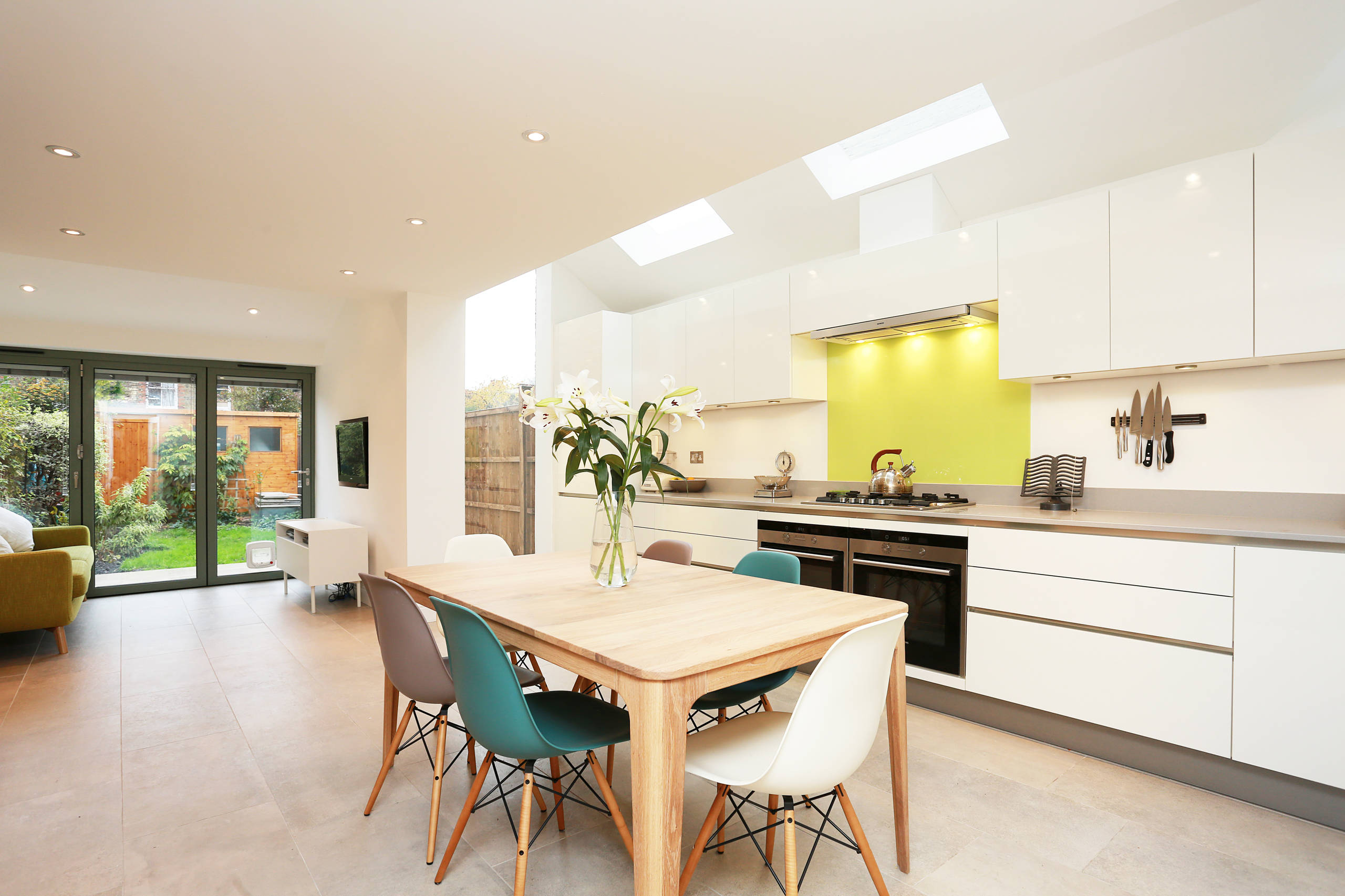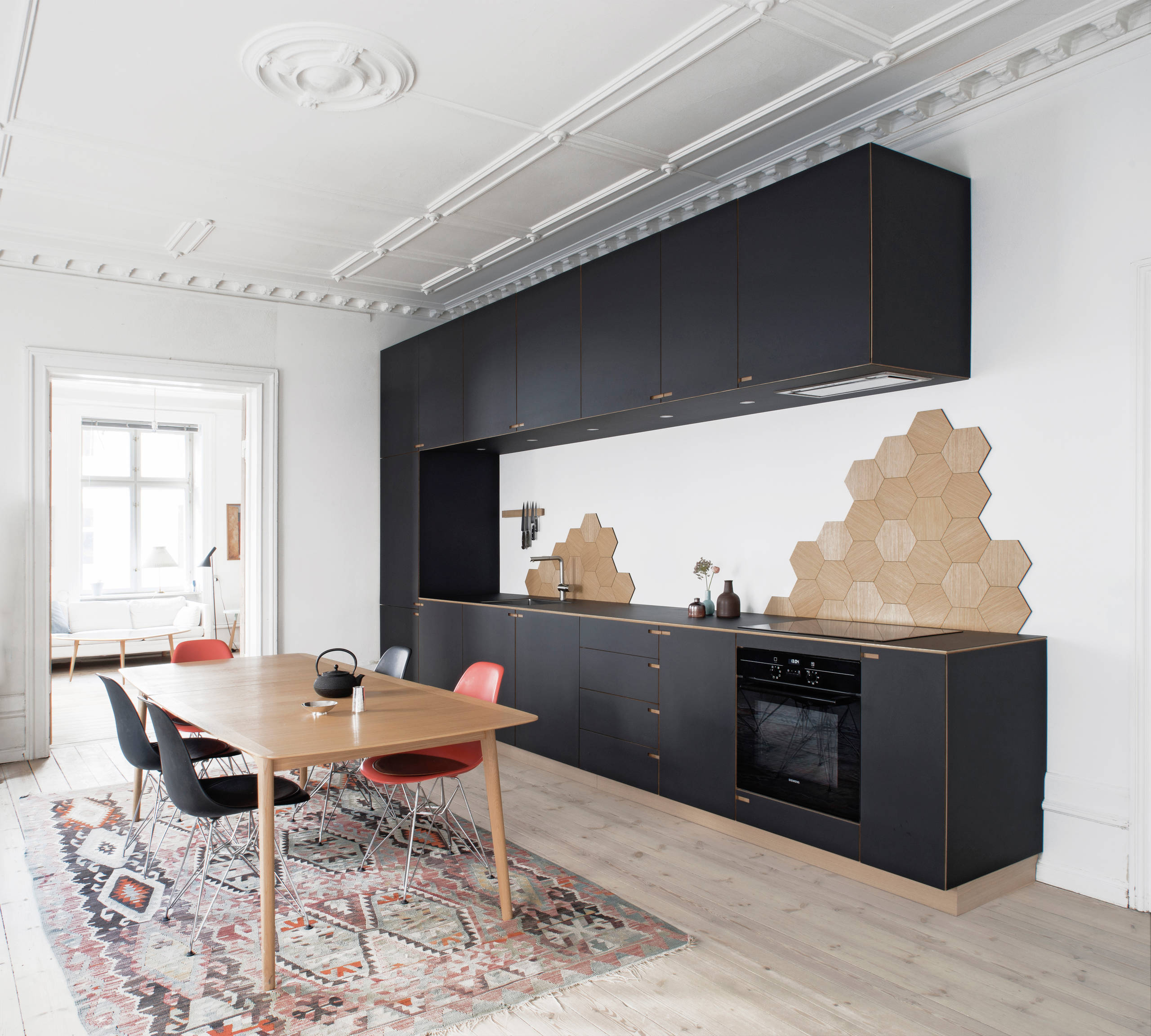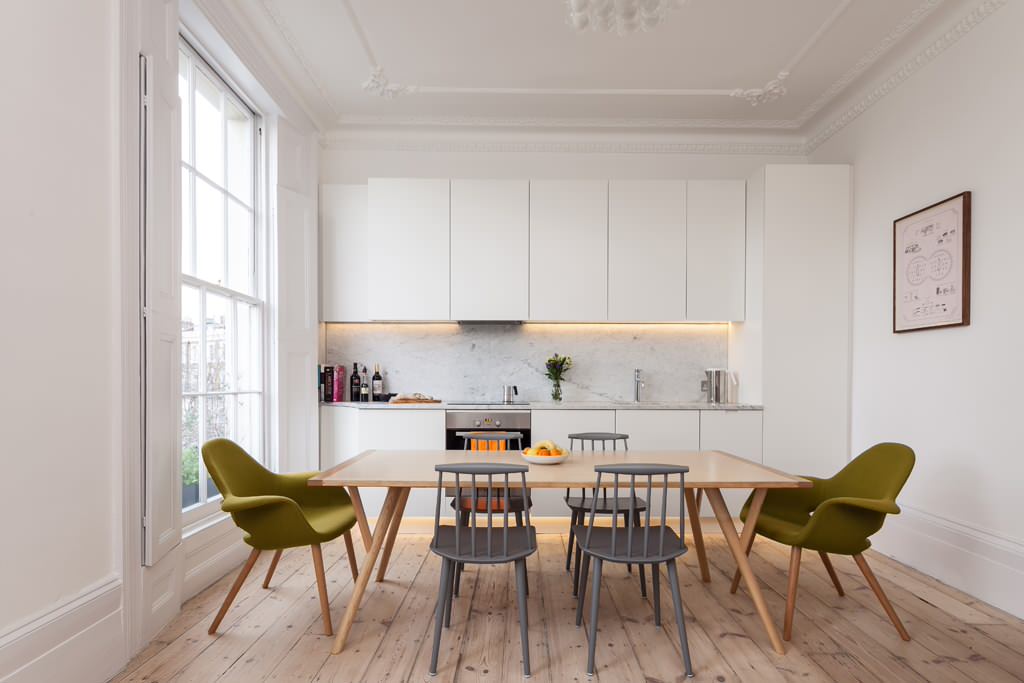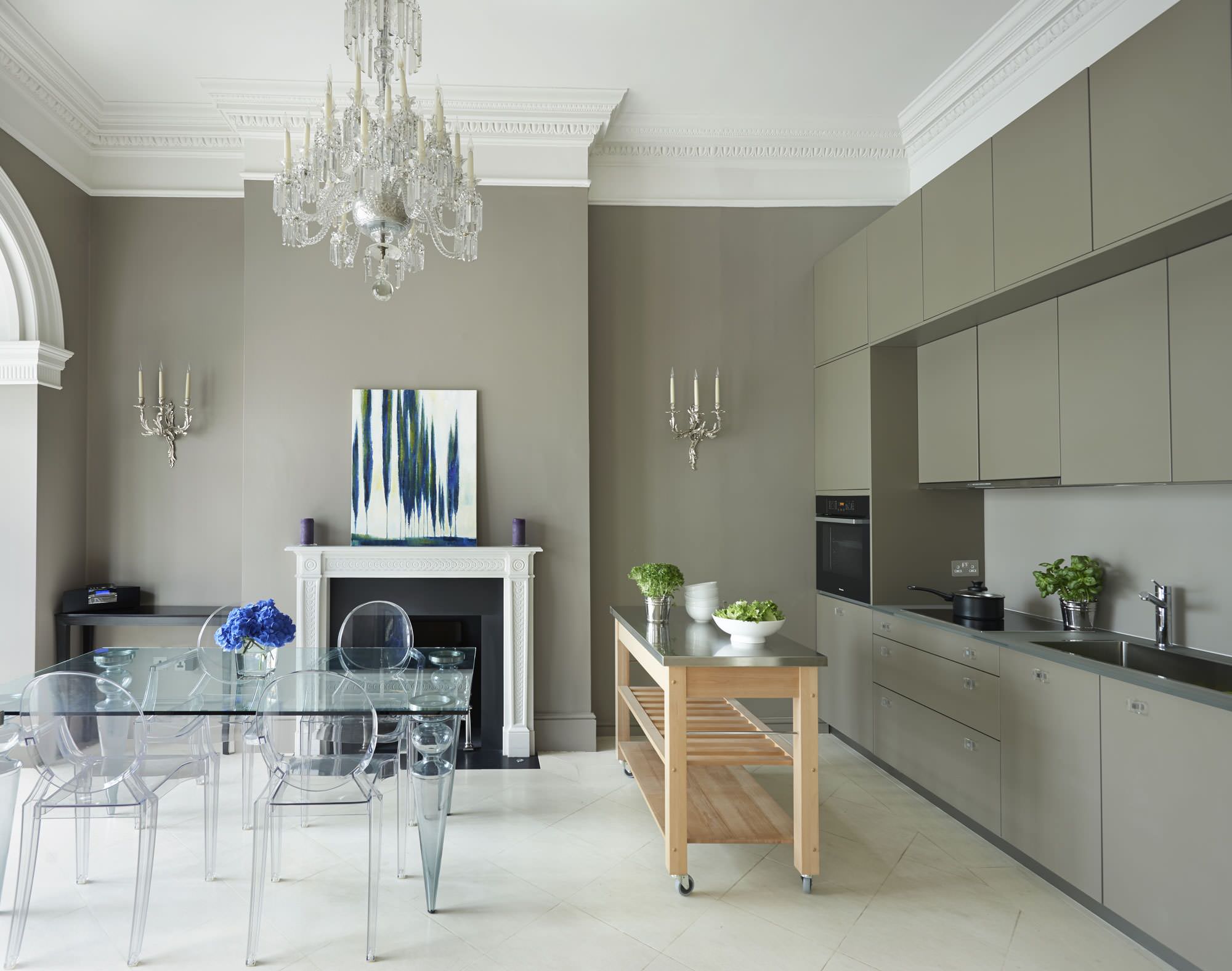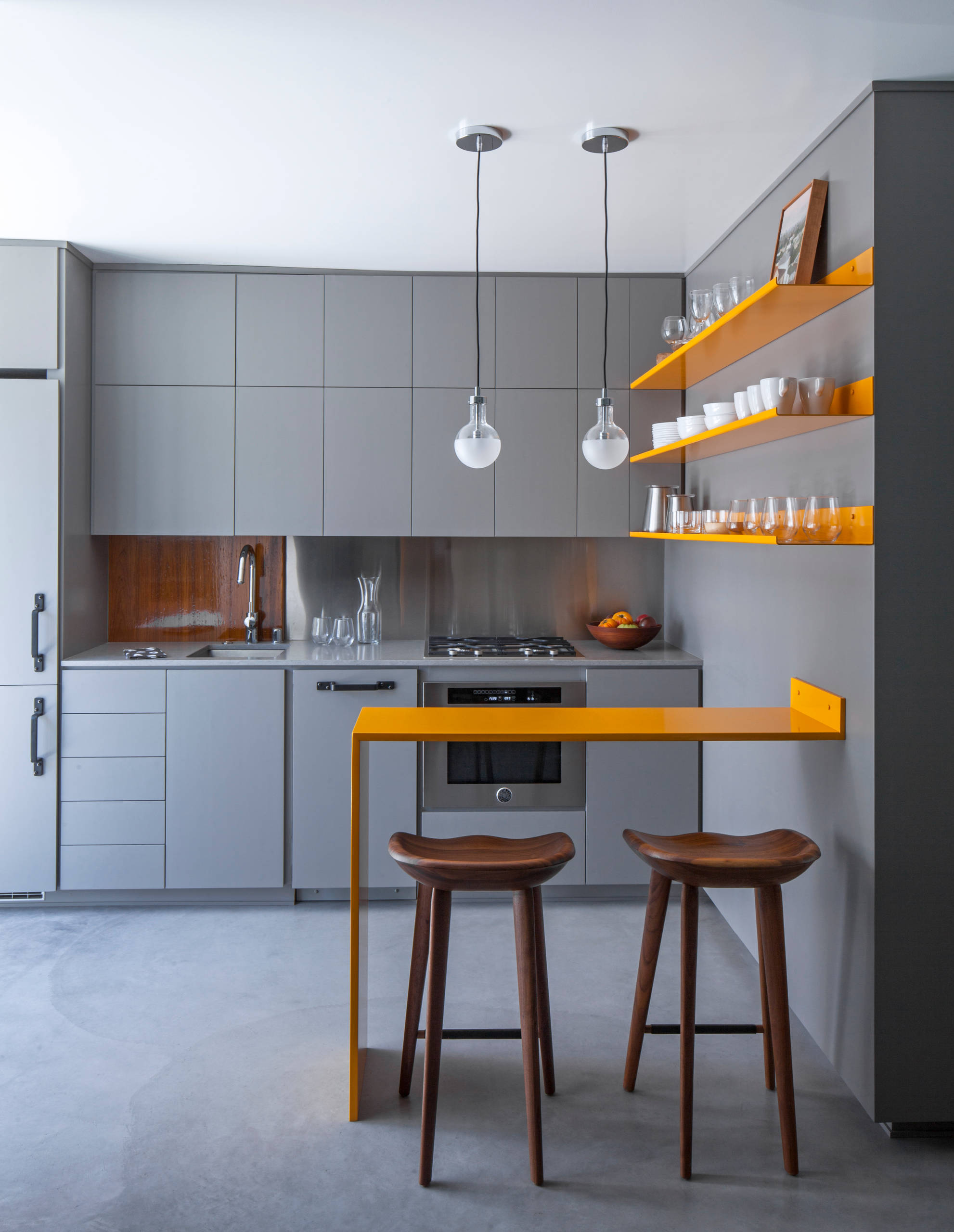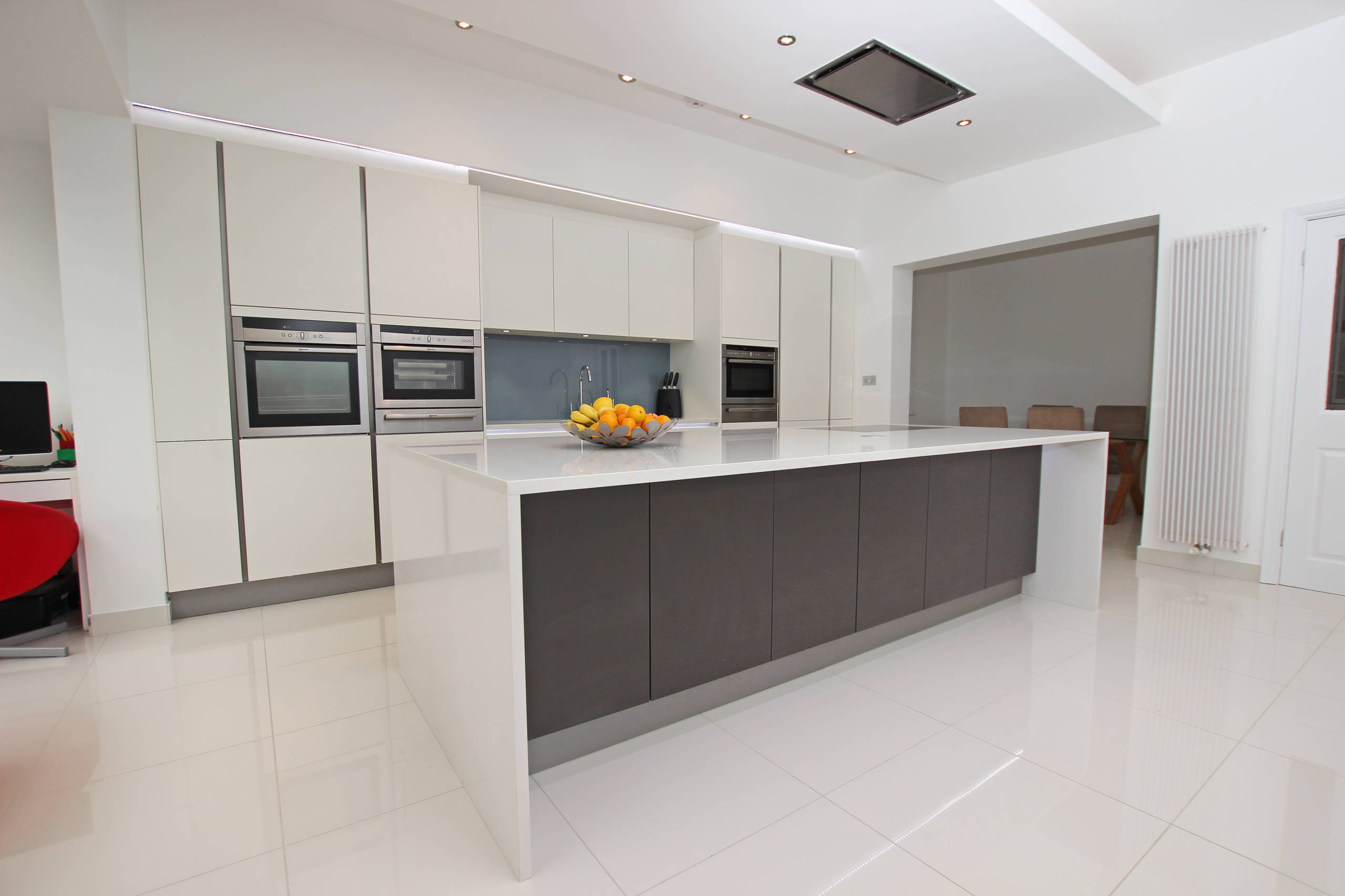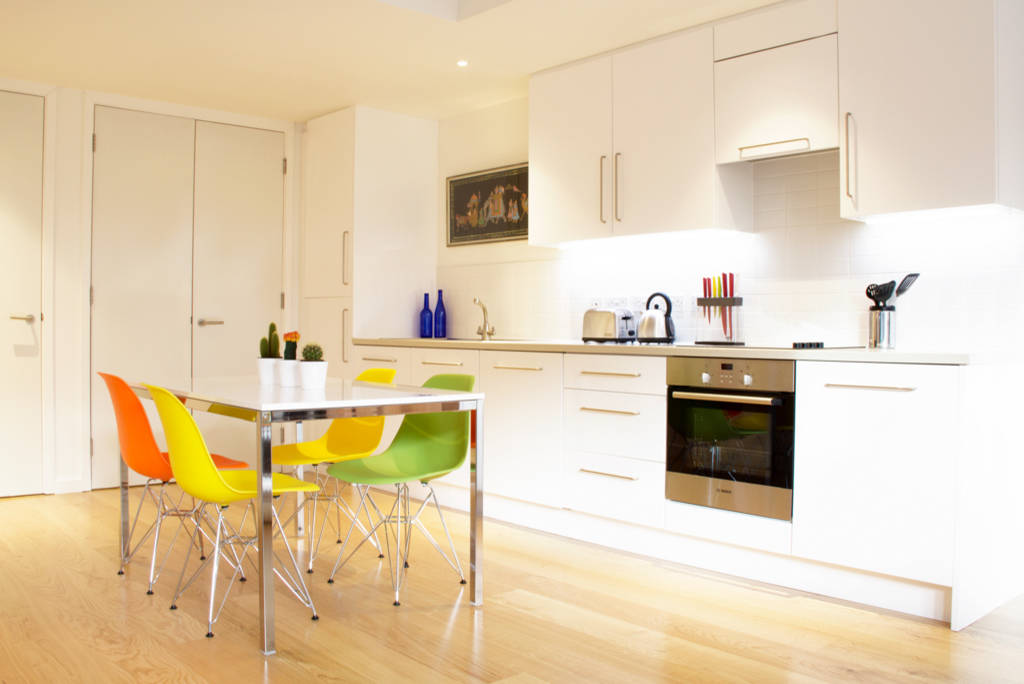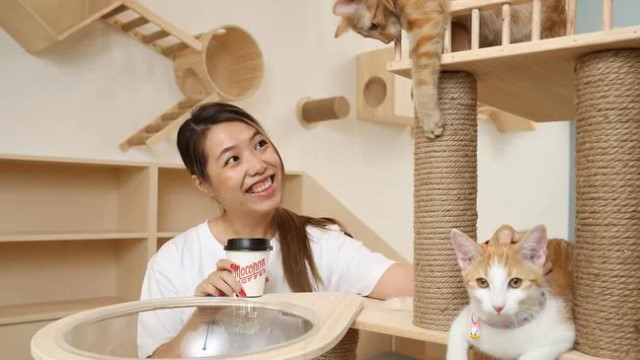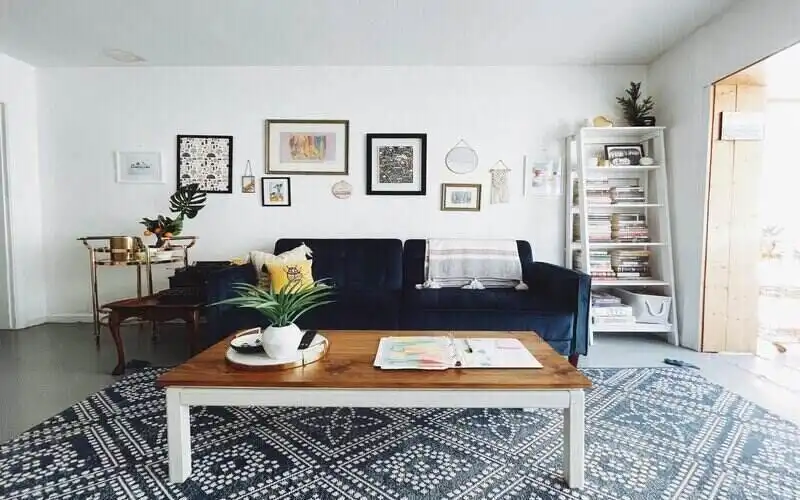Designing a Single-Wall Kitchen? Here's How to Make It Work
The single-wall kitchen layout is brilliant for compact spaces – and often more affordable than other layouts to install
Where kitchen space is at a premium, could a single-wall kitchen layout be your solution? Single-wall kitchens generally have the smallest possible footprint and, as the name suggests, incorporate all furniture and appliances in a single run. Fewer cabinetry units can mean this kitchen layout may cost you less than others, while in a well-planned design – and in small rather than large kitchens, where work zones could become too spread out – fewer units also make for an efficient workflow, with everything within easy reach. Read on for tips on how to make a single-wall kitchen layout work for you.
Plan for a single-wall kitchen layout if you like sociability
While its small footprint might at first seem to be a drawback, the single-wall kitchen encroaches less on an adjoining living space compared with other layouts, freeing up more space for you outside the kitchen. This open-plan arrangement, pictured, is typical for a single-wall layout, and complements contemporary open-plan living.
Generally designed so only one person can cook at a time, this can be a limitation of single-wall kitchens. However, an advantage is that they are also convenient for others to access. It’s important to keep this sociable aspect in mind when planning a one-wall kitchen to ensure a design that will accommodate the users’ needs and lifestyle.
How to plan an efficient single-wall kitchen design
With any kitchen, careful planning is important, but it’s even more so when space is limited, as it is in this layout. Typically (but not always), a single-wall kitchen includes a fridge on the far end of the kitchen run. This layout often has the sink next to it, with benchtop space on either side and your dishwasher and storage beneath. The oven and stovetop are usually located on the far side of this. Again, there should be benchtop space on either side of the stove or oven to allow you to safely land food after cooking. Further storage space can be provided beneath and in overhead cupboards as well.
Alternatively, as long as they don’t block the light source, you might have tall cabinetry units ‘bookending’ the kitchen. This usually includes an oven in tall housing on one side and a fridge-freezer on the other.
Know your single-wall kitchen units: standard run
Above the base units of cabinetry there’s usually a run of wall units, sometimes with a tall unit at one or both ends. Your range hood is often located in this run. In a single-run kitchen, the wall units might stretch the full length of the wall.
Know your single-wall kitchen units: mixed with shelving
Alternatively, you could break up your wall units with a statement range hood or open shelving. Open shelving on the wall to the left or right of the kitchen is another option, and will be decorative as well as practical.
Know your single-wall kitchen units: bridged
Depending on the available space, another option is to introduce a run of bridging units along the top of your wall cupboards. These usually have tall units on either side. Apart from extra storage, this creates a sunken effect for the wall units through subtle changes in depth. The lower wall units are usually 350 millimetres in depth, while the units above are 650 millimetres deep. The overall feel of this is a framed kitchen look, or else a feature-wall effect.
With this arrangement, it’s best to store less-frequently used items in the top row of cupboards, and invest in a foldaway footstool for access. As pictured, you can also match your kitchen cabinetry to your wall colour for a seamless look in your kitchen and dining or living space.
In a single-wall kitchen layout make sure you maximise your storage
Storage is important in any kitchen, large or small, but it’s particularly key with a single-wall kitchen, where there are fewer units than in other layouts.
Ensuring generous cupboard space is a must, but also consider whether there’s potential for more storage elsewhere in the kitchen. The designer of this small cooking space has cleverly added additional storage underneath the seating area, as well as packing more in with additional wall units above it.
The furniture outside the immediate kitchen area has also been designed in the same finish to unite the spaces and create a fluid look. This approach is becoming increasingly popular for open-plan spaces, too, where homeowners want to achieve a feeling of continuity between their kitchen and living areas.
If you have this layout style, choose appliances to suit a small space
Though a single-wall kitchen layout may be small, this doesn’t mean you can’t include the appliances you want. Many modern kitchen appliances are specifically designed for small spaces: for example, you can find integrated compact dishwashers at 45 centimetres wide, compared to the standard 60-centimetre-wide models. The same applies to compact ovens, microwaves, steam ovens and warming drawers.
In an open-plan arrangement, it also pays to choose your appliances wisely and ensure you go for quieter models. This way, if your washing machine or range hood’s extractor fan is on, you’ll receive far less objection from the person watching TV or reading in the adjoining space.
Consider a single-wall kitchen with island bench design
When planning your kitchen layout, it’s worth exploring whether you have space to add an island parallel to your single-wall kitchen. With careful planning, this will enhance the layout.
It can also mean the single-wall kitchen layout will work for larger spaces as, in effect, it reconfigures it into a galley kitchen with the same functionality. While this depends on the space and how you want to use it, generally speaking the additional work surface and storage an island introduces is extremely beneficial.
Create a distinction from the adjacent open-plan space
If a kitchen island won’t fit, you might consider adding a table, both for dining and as an extra work surface. Aside from the obvious benefits this brings, a table can also mark a distinction between the kitchen and living room, creating a feel that they are two separate spaces.
Other ways you might achieve this same effect are through a breakfast bar with stools (great for entertaining guests) or a change in the flooring between each area to zone the separate functions of the spaces.
Create a feature to add interest to a single-wall kitchen
It might be that you want unfussy cabinetry to create a clean and understated look in your kitchen. This is always a popular choice, but it can also be used to highlight a different aspect of your kitchen, as with the stone feature wall pictured here, which stands out more than the minimal white units.
On the other hand, these layouts are ideal if you want to make the single-wall kitchen itself the focal point. You may choose to contrast it with the rest of your room with a bold splash of colour in the cabinetry. Alternatively, you might opt for statement shelving or a distinctive splashback.
Make the single-wall kitchen layout work for you
Whatever your preference, the single-wall kitchen layout is definitely worth considering if you have a small space and are trying to work out the best kitchen layout for it. Although typically small in size, there’s far more to this layout than may first appear, and lots of workable options to ensure you can make it just right for you.
Originally published by Houzz


